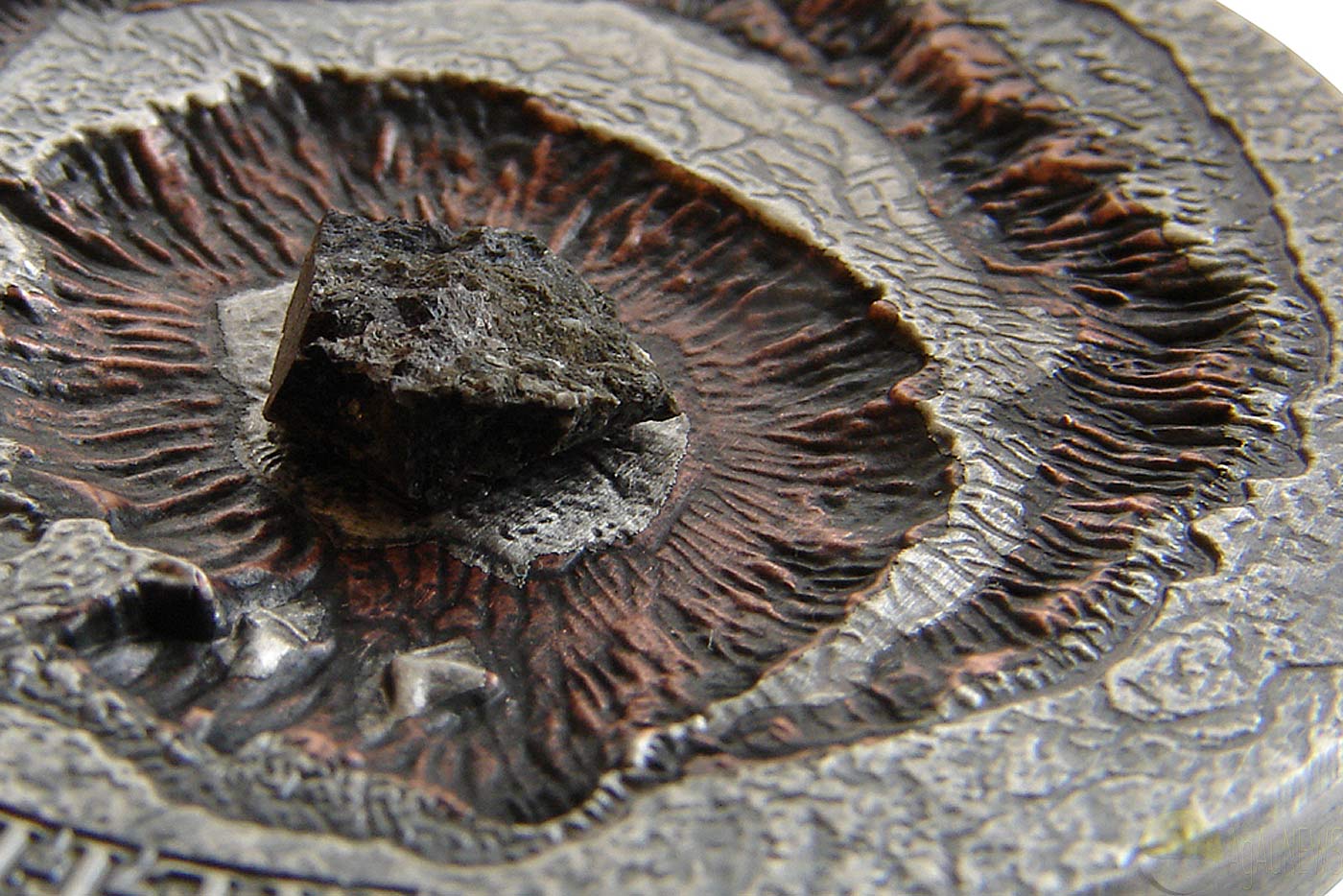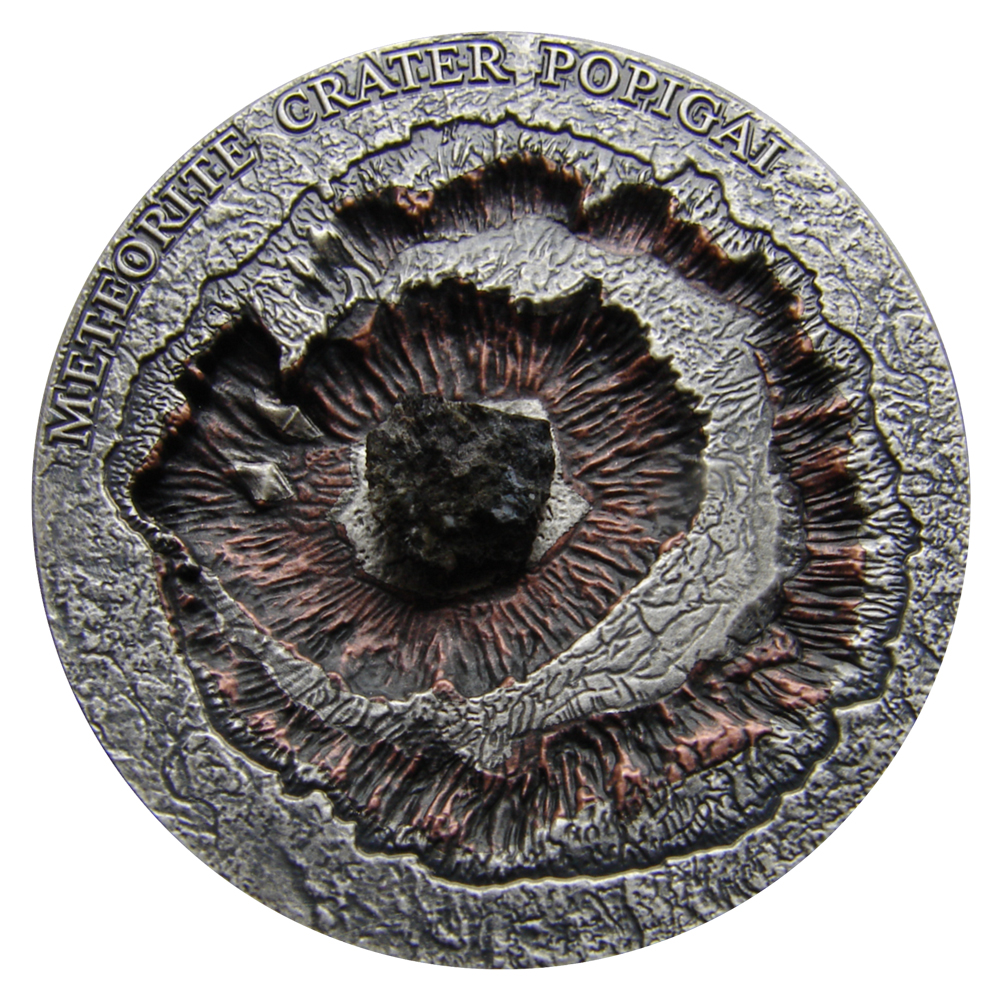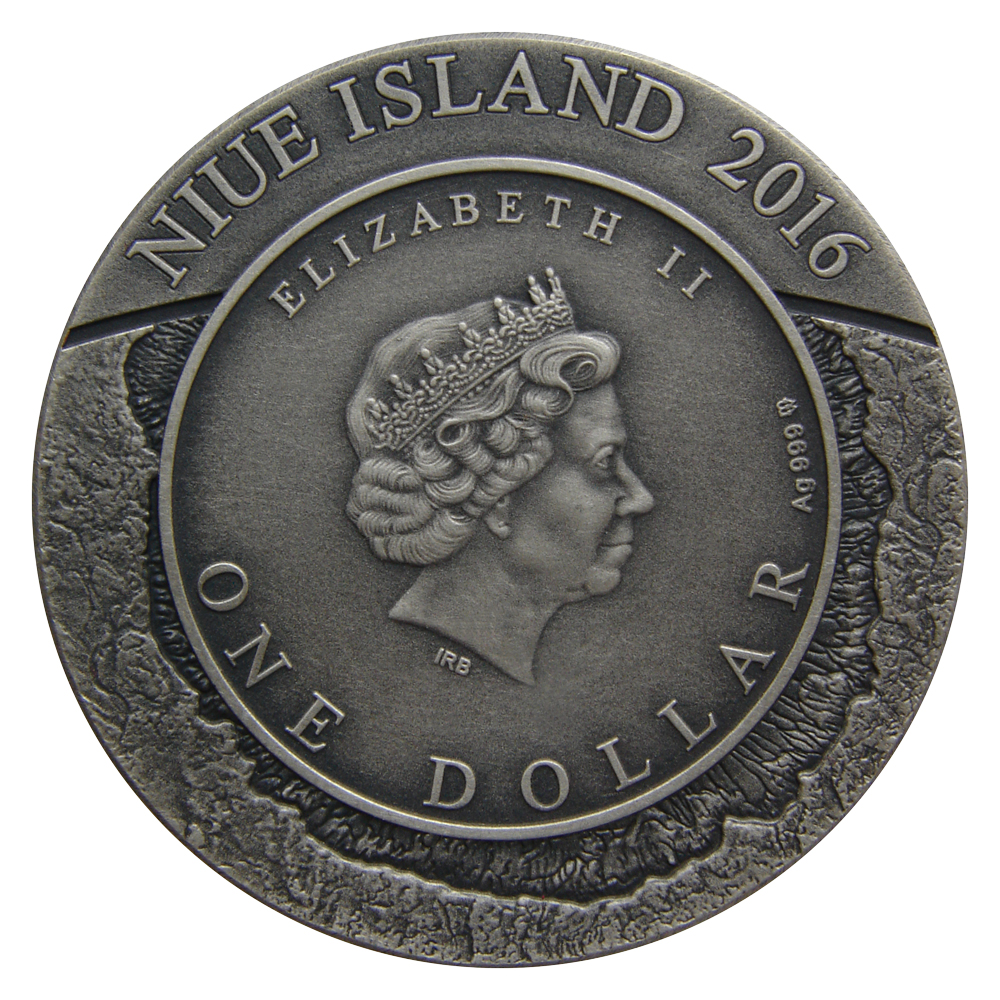The third in what is turning out to be a fine series of meteorite coins from the Mint of Poland has just been announced, and features an extremely powerful strike from 35 million years ago, Popigai. Located in the Russian region of Siberia, Popigai is the fourth largest verified impact crater on Earth at 100 kilometres (62 miles) in width and has been desibnated by UNESCO as a Geopark, a location of special geological interest. Further studies of the site in 1997 determined that the impactor was either an 8 km (5.0 mi) diameter chondrite asteroid, or a 5 km (3.1 mi) diameter stony asteroid.
Previous coins in the series have always been highly regarded and we can see no reason why this one won’t be the same. The first coin featured Canyon Diablo, the second Wolfe Creek, both showing an increase in design complexity that is carried on here, Popigai being a deeper and more dramatic strike than Wolfe Creek, for example. In other respects the series hasn’t changed. A troy ounce of fine silver in weight, 38.6 mm diameter, and a mintage of 666 are all carryovers from the first coins and mean the series is relatively affordable despite the tight numbers produced.
We like this one a lot, very dynamic, with well controlled inscriptions, often the downfall of some modern designs. Well packaged as before in a quality wooden box, the whole is a fine item that sells for around €130-€140 in general. Shipping at the end of January, it’s available to preorder now from a range of dealers around the world including Intercoins-Berlin, Powercoin, First Coin Company, Top World Coins, The Coin Shoppe, Pela Coins, Dazzling Coins, and MB Coincorner.
TRILLIONS OF CARATS
Just three years ago, the Russian government revealed that the Popigai crater was home to a treasure trove of industrial diamonds, many of which are twice as hard as other diamonds, which may number in the trillions of carats (a carat is approximately 1g in weight). This would put the supply under the 100km wide Popigai crater at around ten times the size of the rest of the world’s reserves combined.
Kept secret since the 1970’s because other Russian mines were profitable without knowledge of this one becoming widespread, the story eventually broke when the yields at other mines, especially the Mirny mine to the east, began to fall from their highs of 10 million carats a year to numbers so low the mine closed, leaving the second-largest excavated hole in the world.
The diamonds at Popigai are not of a gem quality, and there is some disbelief that so many diamonds could have formed in such a tight area, but theoretically it s possible. No doubt more information will filter out as time progresses. The shock pressures from the impact instantaneously transformed graphite in the ground into diamonds within a 13.6 km (8.5 mi) radius of the impact point. These diamonds are usually 0.5 to 2 mm in diameter, though a few exceptional specimens are 10 mm in size.
ADVERTISEMENTS










Since Canyon Diablo and Wolfe Creek meteorite silver coin price has increased by double or triple after the release to collector. So I believe that Popigai crater meteorite coin too can do the same.